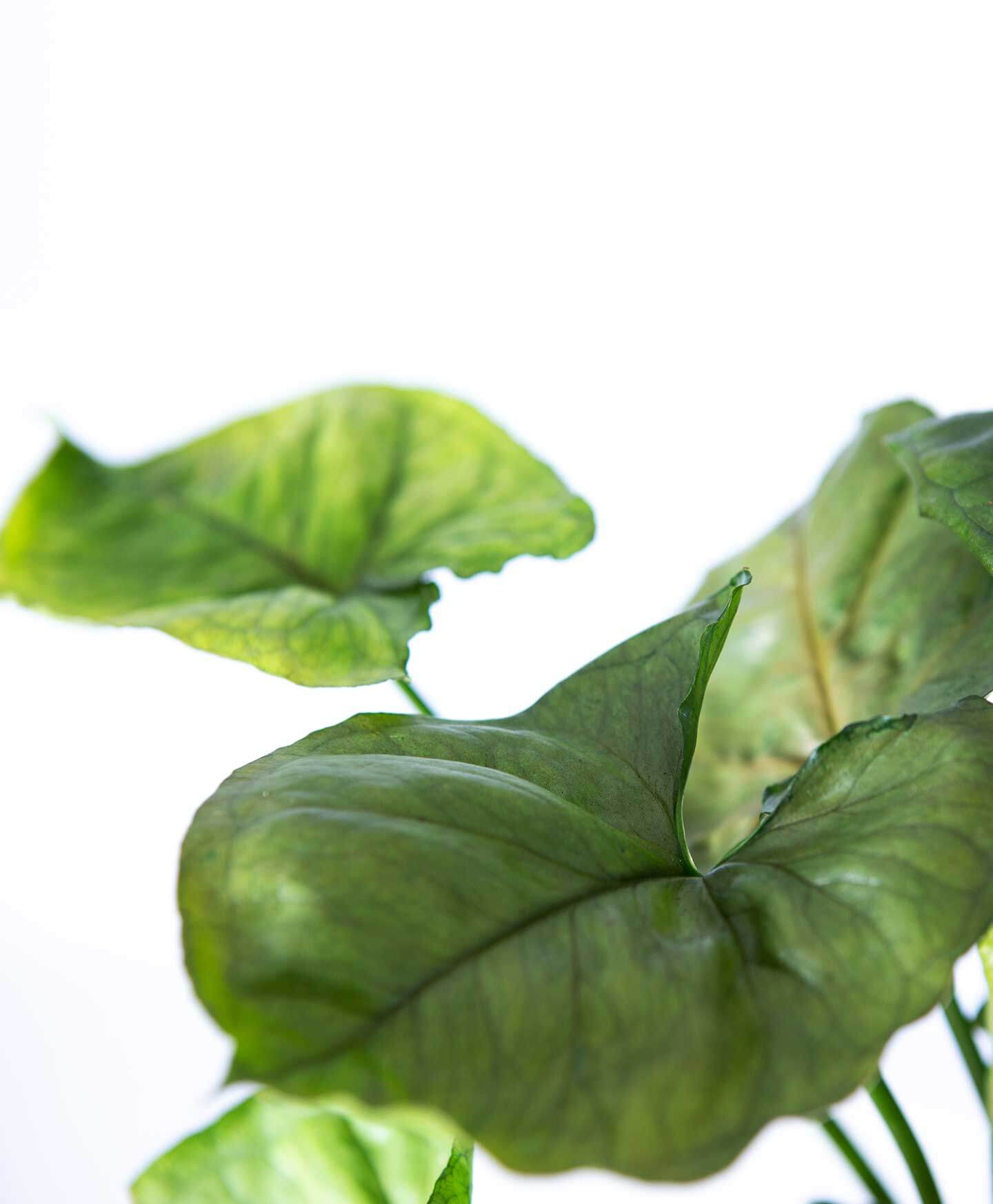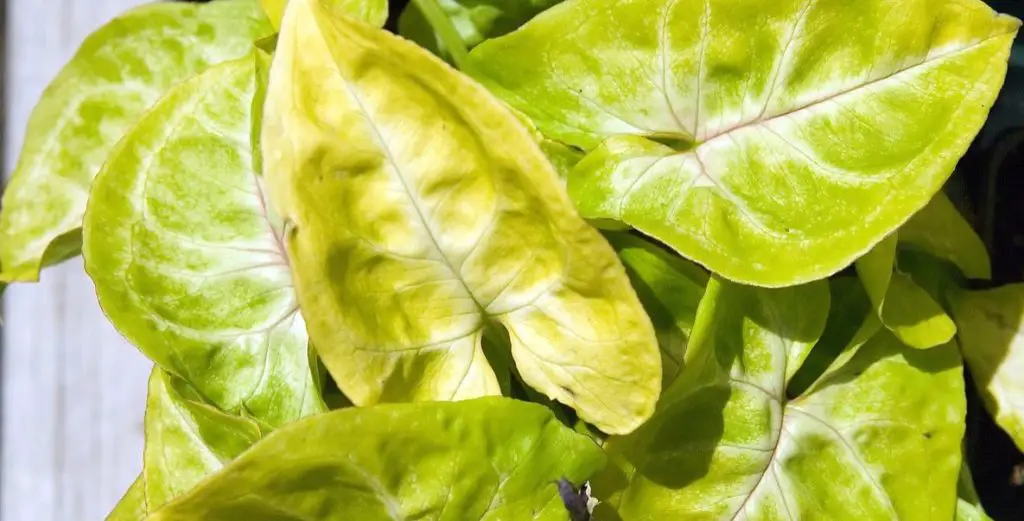Syngonium, also known as arrowhead plant, is an easy care and popular houseplant. It is loved for its lush green arrow-shaped leaves that add a burst of tropical flair to any indoor space. However, a common issue syngonium owners face is yellowing leaves.
Yellowing leaves are usually a sign that something is wrong with your plant and action needs to be taken to get your syngonium healthy again. In this article we’ll explore the main reasons why syngonium leaves turn yellow and solutions to fix the problems.
Overwatering
The most common cause of yellow syngonium leaves is overwatering. Syngoniums prefer consistently moist but not soggy soil When overwatered, the roots are unable to get oxygen This leads to root rot, which causes the leaves to yellow and drop.
The leaves on your Arrowhead Plant could be turning yellow for a number of reasons. Let’s investigate and get to the bottom of this!

Moisture
The most common cause of yellowing leaves among Arrowhead Plants is improper soil moisture–in particular, overwatering. Only water your Arrowhead when 50% of the soil volume is dry. You will know your Arrowhead Plant needs a drink when the leaves start to wilt slightly.
When you water your Arrowhead Plant, make sure you give it enough so that water flows into the saucer from the hole in the bottom of the pot. It is very important to get rid of any extra water in the saucer and keep your plant from sitting in water. Your Arrowhead Plant will not do well with “wet feet.” The roots will rot, and the plant will die in the end. Yellow leaves are the first sign that root rot may be occurring.
Providing proper and consistent soil moisture is important in caring for an Arrowhead Plant. Alternating between bone-dry and wet soil from ill-timed watering can create stress and cause your plant to yellow.
Humidity Level
Low humidity and dry soil make the edges of leaves droop and turn brown. Later, the leaves turn yellow, brown, and shrink all the way through. Your Arrowhead Plant will appreciate a boost in humidity from regular misting, a humidifier, or pebble tray.
Improper Light
Arrowhead Plants grow best when placed in bright indirect sunlight, but they will tolerate lower light. When exposed to direct sunlight for too long, the foliage will burn. While Arrowhead Plants can adapt to low light areas, their growth may slow. If placed in very low light, yellow leaves may develop.
Pests
A weakened or stressed Arrowhead Plant is more susceptible to insect infestations. Sap-sucking bugs like spider mites can drain your plant of moisture. This problem quickly manifests itself by yellowing leaflets and fronds. Scale, mealybugs, and spider mites occur frequently in indoor conditions. If you don’t get rid of these little bugs right away, they will multiply and move along the parts of the fronds that aren’t being used. The insects’ sharp mouths wear down your plant and speed up the yellowing process, especially if your Arrowhead is already sick from not getting enough light, nutrients, or water.
Natural Yellowing
Is your Arrowhead Plant putting out new growth? If your plant has new growth and age-old leaves that are turning yellow, especially at the base of the plant, this is normal. Your plant sheds its old leaves and sends energy to new growth.
Syngonium Arrowhead, Help, Care Tips, and Problem Investigation
FAQ
Can a yellow leaf turn green again?
Why is my Syngonium losing color?
How often should I water my Syngonium plant?
Why are my Syngonium leaves turning yellow?
This easy to grow plant can beautify your gardening space, but if you notice Syngonium plant leaves are turning yellow, then it indicates something is missing from its growth requirement. You don’t have to panic all the time; it can be a part of natural process. Lower leaves of most houseplants turn yellow and drop off with time.
What causes yellow and orange snot?
The discharge that comes from the nose is called snot. It is also called nasal mucus. Snot can be clear, green, black, yellow, or orange depending on the underlying condition. Yellow snot is a sign of viral infection. It is a sign of the body fighting back the virus. The yellow color is from the white blood cells. Orange or brown-colored snot could be a result of old blood exiting rhe body.
Why are my Syngonium leaves turning brown?
Low humidity causes leaves to droop and brown on their edges, later followed by yellowing and even full browning, and shriveling. Solution: Boost the levels of humidity by regularly misting the Syngonium or use a humidifier or pebble tray. why does my syngonium have dark brown spots?
Why does my Syngonium have dark brown spots?
Dark brown spots on your Syngonium may signal the presence of bacteria. Bacterial blight and stem rot are caused by the bacteria Erwinia with symptoms including dark green spots on the leaves and a foul-smelling soft rot.
- A Complete Guide to Caring for Yuki Cherry Blossom Shrub - January 23, 2025
- Identifying Red Hot Poker Seeds: What to Look For When Harvesting Torch Lily Pods - January 23, 2025
- A Complete Guide to Harvesting Evening Primrose Seeds - January 23, 2025

